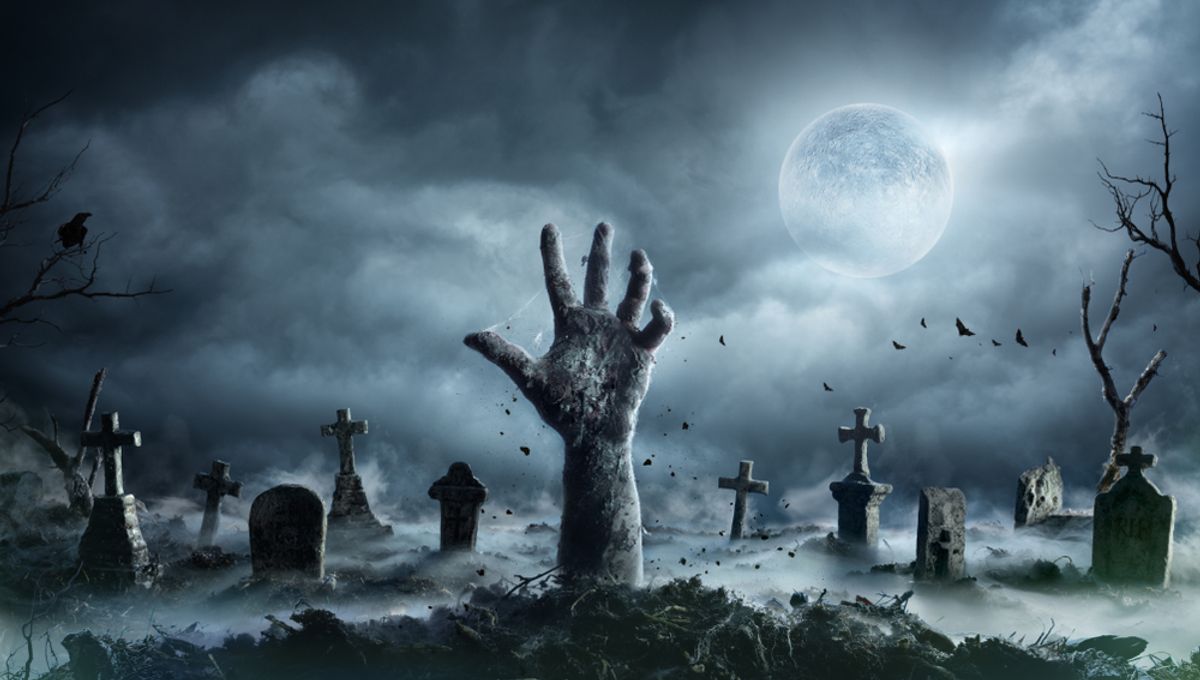
The undead don’t usually participate in clinical studies, although three supposed zombies once agreed to have their brain activity measured by researchers in Haiti. Like an episode of Scooby Doo, the investigation was launched in an attempt to uncover the identity of the spooky trio, each of whom had been recognized by locals as long-deceased individuals returning from the dead.
According to Haitian Voodoo beliefs, the spirits of the dead can sometimes be captured by sorcerers called bokors, who can then use these souls to reanimate fresh corpses into zombies. Often spotted wondering the backwaters of rural Haiti, these undead sleepwalkers are regularly reported to local authorities, with up to a thousand zombies sighted each year.
In a wild study published in 1997, researchers investigated three such cases, using electroencephalography and DNA testing techniques to try and find a rational explanation for the apparent walking corpses.
The first of these involved a woman who had died at 30 years of age, only to be spotted three years later by family members who recognized her thanks to a distinctive facial mark. A local court then authorized the opening of the woman’s grave, revealing it to be full of rocks.
Describing the zombie, the study authors explain that “she kept her head in a lowered position, and walked extremely slowly and stiffly, barely moving her arms.” She was also unable to communicate “but would occasionally murmur some incomprehensible but stereotyped words.”
Despite the woman’s apparent zombification, the researchers reveal that her “electroencephalogram and central nervous system examination were unremarkable.” Based on their assessment of her condition, the authors offer a presumptive diagnosis of catatonic schizophrenia, but can’t explain how she came back from the dead.
Proposing a speculative solution, they explain that the woman might not have died at all, but may instead have been poisoned by a “neuromuscular toxin” – possibly administered by a nefarious bokor – in order to induce catalepsy and trick relatives into thinking she was dead. The guilty sorcerer could then have retrieved the buried body shortly before the woman regained consciousness, while a lack of oxygen within the grave may have resulted in brain damage, thus explaining her zombie-like state.
Moving on, the study authors describe a 26-year-old man who was seen at a local cockfight 19 months after being buried. The man’s uncle was subsequently found guilty of using sorcery to zombify the man, who was then kept chained to a log at his parents’ house.
Once again, clinical examinations returned no supernatural findings, and the man was diagnosed with “organic brain syndrome and epilepsy.” More importantly, DNA testing revealed that he was not the man who had died shortly beforehand, significantly weakening his claim to zombie-hood.
In a similar case, a 31-year-old woman was identified as a villager who had been dead for 13 years. Once again, however, a medical examination revealed that she was very much still human while genetic analyses showed that she was not the deceased individual after all.
Considering these latter two examples together, the study authors conclude that “mistaken identification of a wandering, mentally ill, stranger by bereaved relatives is the most likely explanation.”
Of course, they would’ve gotten away with it if it weren’t for those meddling researchers.
Source Link: Scientists Once Scanned The Brains Of 3 Suspected Zombies In Haiti